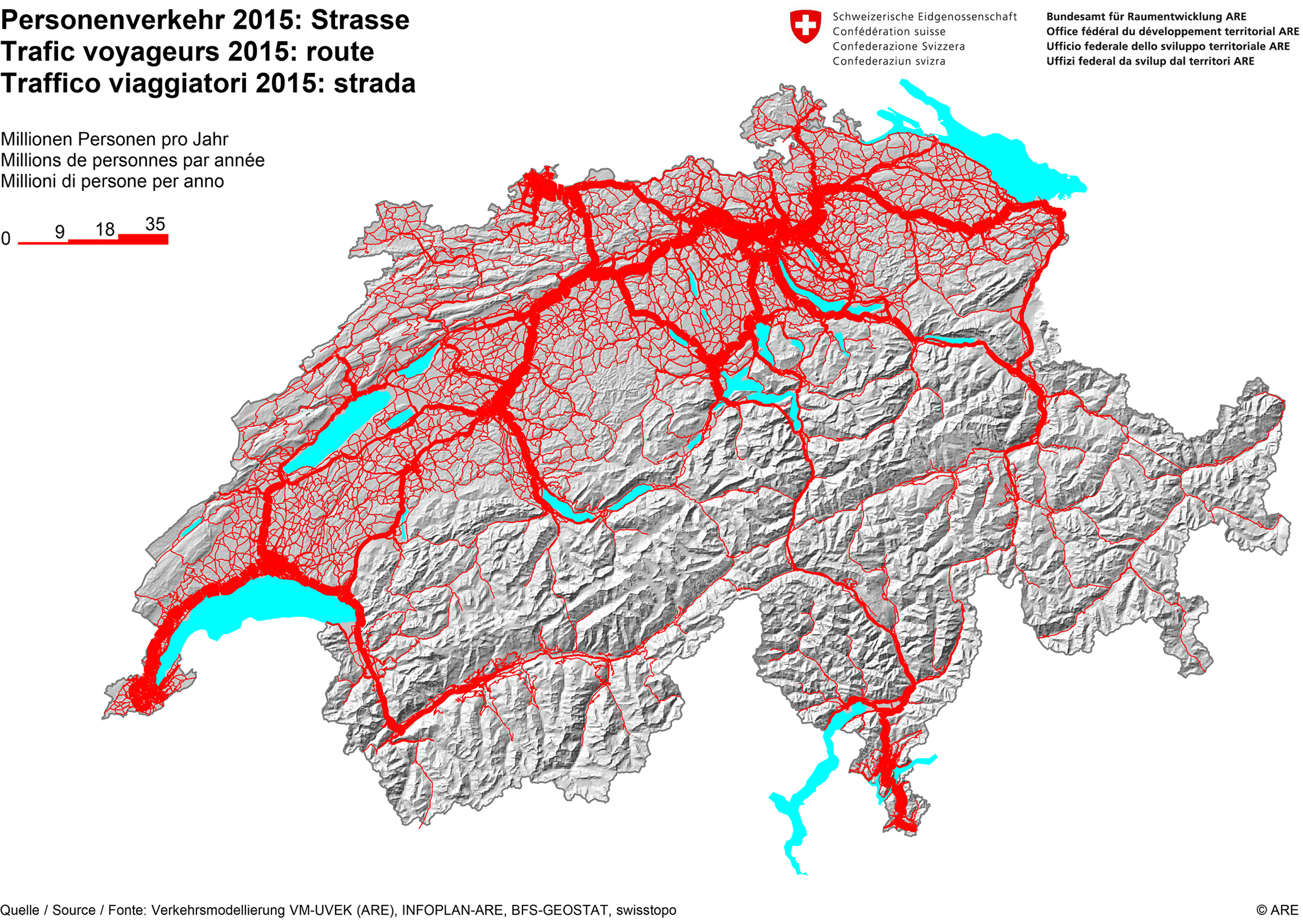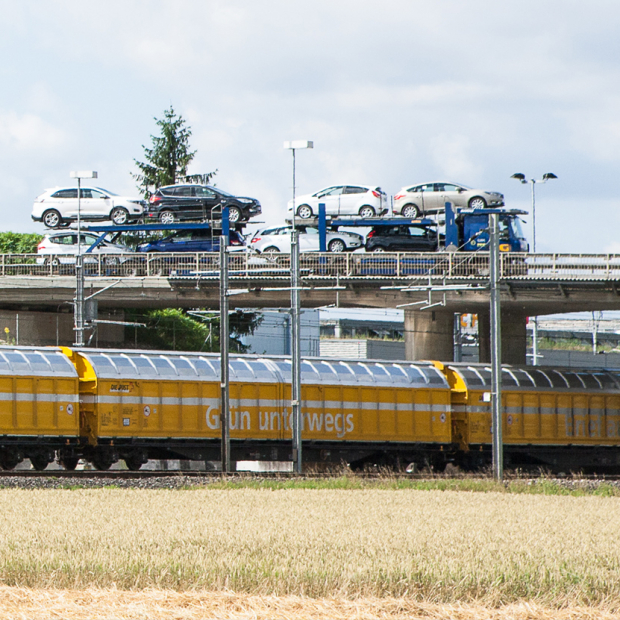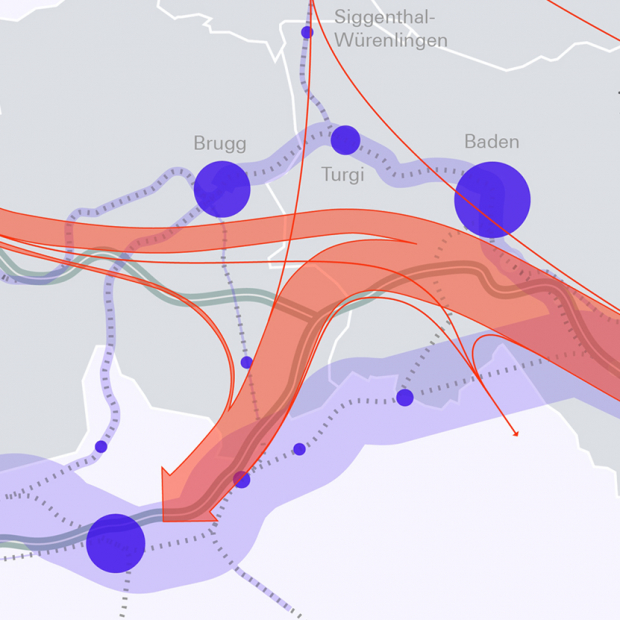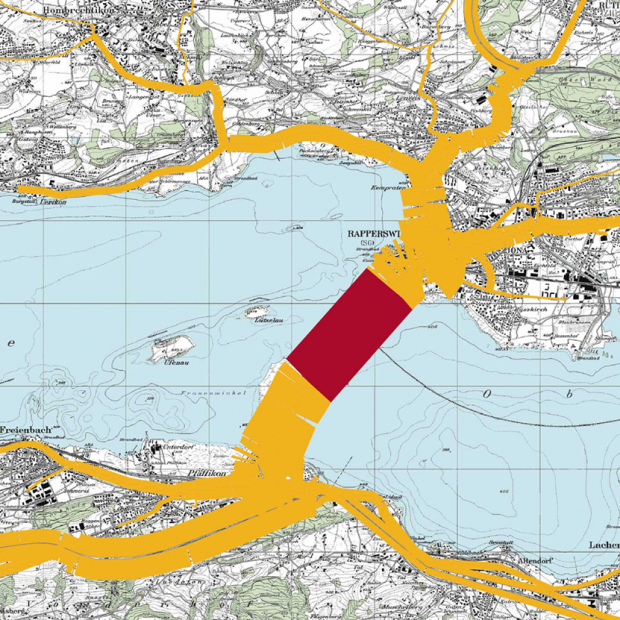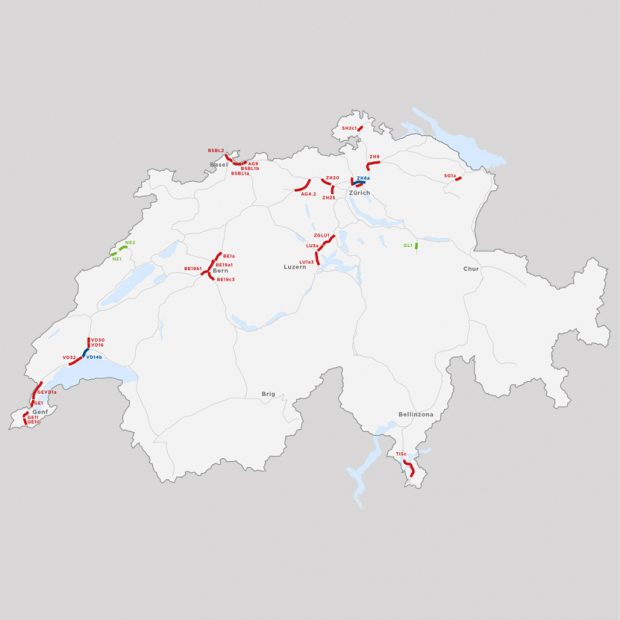
Average daily passenger and freight volumes on roads and railways in 2015
Working on behalf of the Swiss Federal Office for Spatial Development (ARE), EBP calculated the annual average daily traffic volumes (AADT) for passengers and freight on the country’s roads and railways. Using its calculations as a basis, EBP then developed traffic load maps that can used to support a variety of other evaluations.
Annual average daily traffic
Together with the SSP Consult engineering firm, EBP created models to represent the annual average daily traffic (AADT) for passengers and freight on roads and railways in the year 2015. These models now serve as a basis for deriving environmental impact data, assessing annual mileages, drafting location-specific analyses and creating other web-based representations (traffic load maps).
Comparison of methods
In the past, AADTs were ascertained by calibrating annual average workday traffic (AAWT) matrices to AADT counts with the help of a matrix-correction operation. The AAWT matrices for passenger traffic were drawn from the Swiss National Model Passenger Transport(NMPT) and the AAWT matrices for freight traffic from the Aggregated Method for Freight Traffic (AMFT). EBP compared the previously deployed methods to a new interpolation method of conversion factors. After evaluating the different methods, a decision was made to apply the existing method to derive estimates of the relevant traffic loads.
Using traffic counts as a basis
The basis for the calculation of the traffic load maps was established using the following sources: the existing models for annual average workday traffic (AAWT) for passenger and freight transportat for 2010 (current baseline state); the ASTRA traffic counts for 2015 and extrapolated cantonal traffic counts; selected SBB traffic counts for 2015; and the freight train data for 2015 made available by the Swiss Federal Office of Transport (BAV).
Good correspondence to the available traffic count data
EBP created the following models for the year 2015:
- AADT for vehicles on roads, subdivided into passenger vehicles, delivery vehicles, trucks and semi-trailer trucks
- AADT for passengers using public transport services
- AADT for road freight transported in delivery vehicles, trucks and semi-trailer trucks
- AADT for railway freight
The resulting models show very good correspondence to the available traffic count data.
The traffic load on a large portion of the road network increased between 2010 and 2015. EBP ascertained the following average annual increases or decreases in total annual mileage between the years 2010 and 2015: passenger vehicles: +2.1%; delivery vehicles: +3.5%; trucks: -0.3%; and semi-trailer trucks: +0.7%.
The AADT comparison for railway passengers between 2010 and 2015 shows an average annual increase of 1.8% in the number of kilometers traveled.
The comparison for road freight between 2010 and 2015 shows an average annual increase in ton-kilometers of 0.4% (i.e. including heavy semi-trailer trucks only).
While the study revealed fluctuations linked to the performance of the overall economy, no general trends in railway freight volumes were detected between 2010 and 2015. The data show a total net freight volume of 10.036 million ton-kilometers in 2015.
